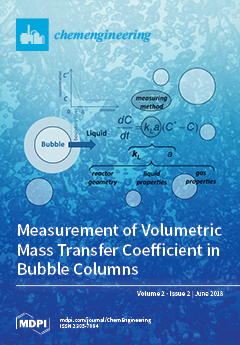Amongst the strategies applicable for CO
2 capture and sequestration, the adsorption process has a high potential to be applied as an alternative CO
2 separation strategy as it offers large adsorption capacity, requires low energy for regeneration with economical equipment cost, prevents
[...] Read more.
Amongst the strategies applicable for CO
2 capture and sequestration, the adsorption process has a high potential to be applied as an alternative CO
2 separation strategy as it offers large adsorption capacity, requires low energy for regeneration with economical equipment cost, prevents corrosion problems, and provides ease of applicability. Inspired by the most applicable amine-based chemical absorption for CO
2 capture, the modification of adsorbent by amine was first considered and then investigated. This study introduces kenaf (
Hibiscus Cannabinus L.) as a potential low-cost material in evaluating the effect of amine functional group concentrations on CO
2 adsorption capacity. Monoethanolamine (MEA) and tetraethylenepentamine (TEPA) were impregnated on kenaf via a wetness impregnation method to achieve the aim. The ratios of amine to kenaf were varied at 1:2, 7:10, 1:1, 2:1, 5:1, 7:1, and 10:1. Then, the prepared amine-modified kenaf core sorbent was characterized using different morphology and structural characterization techniques such as a field emission scanning electron microscope (FESEM) analyzer and Fourier transform infrared (FTIR) spectroscopy. Results obtained through the analyses showed that amine (MEA and TEPA) were successfully impregnated on the kenaf core surfaces, and that amine concentrations have a significant effect on the morphological structures of the kenaf core support. The study on CO
2 adsorption capacity was conducted in a pressure swing adsorption system (PSA). Results revealed that the highest CO
2 adsorption capacity for MEA-modified kenaf adsorbent was achieved at an amine to kenaf ratio of 1:1 (2.070 mmol/g), while for TEPA-modified kenaf adsorbent at a ratio of 2:1 (2.086 mmol/g). The study on the effect of amine concentration on kenaf adsorbent is beneficial in introducing kenaf as a sorbent in capturing CO
2.
Full article





